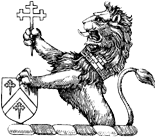
The Person & the Court
DRED SCOT & ROE V. WADE
In 1833 a surgeon in the U.S. Army, Dr. John Emerson, residing in St. Louis, Mo., purchased from one Peter Blow a piece of property with the name of Dred Scott. Scott was a black man of African descent, and he was at that time about 33 years old. He had been born in Virginia in 1799, born a slave to the Blow family.
Now this was not, of course, unusual in those days. A slave was a valuable asset. In large numbers, they were primarily property of the wealthy, but certainly those of solid middle-class means could afford to own one or two. Slaves were major assets, not unlike large farm animals of the day, or expensive machinery of our own time. They were elements of status, but more than that, they were expected to produce income for their owners. Though human, they were nevertheless property and they were treated and disposed of as such. Their humanity wasn’t the issue. The issue was whether these humans, these people, had any rights or protections under the laws of the U.S., or whether they were merely property, to be dealt with as such. No, said the U.S. Supreme Court, black Africans, or blacks of African descent, slave or free, cannot be citizens, cannot sue in Federal courts, have no rights and no protections under the laws of the land. This decision was settled law.
You May Also Enjoy
Love Thy Body: Answering Hard Questions about Life and Sexuality... The Maternal Face of God?: Explorations in Catholic Sophiology... Seeing is Believing: Why Our Culture Must Face the Victims of Abortion... An Introduction to Ethics: A Natural Law Approach
People who run no hospitals and who do nothing to help the world's poor are envious of the Church's works of mercy and aim to persecute her.
Other inmates were shocked that pro-life rescuers got two to five years in prison for doing a sit-in, handing out brochures, livestreaming a sit-in, or planning a sit-in.

